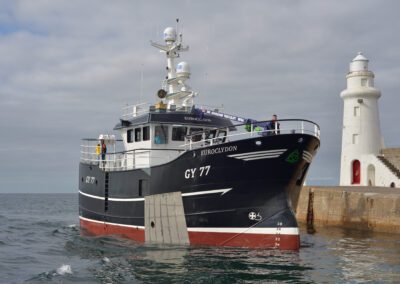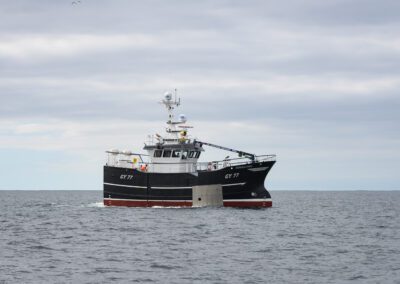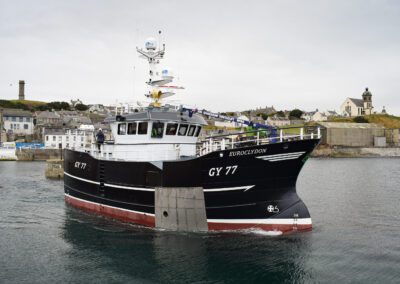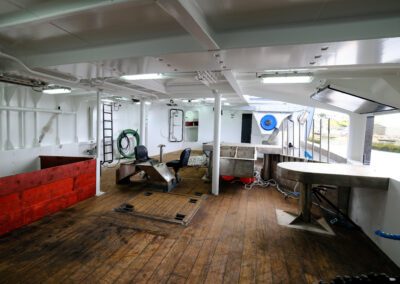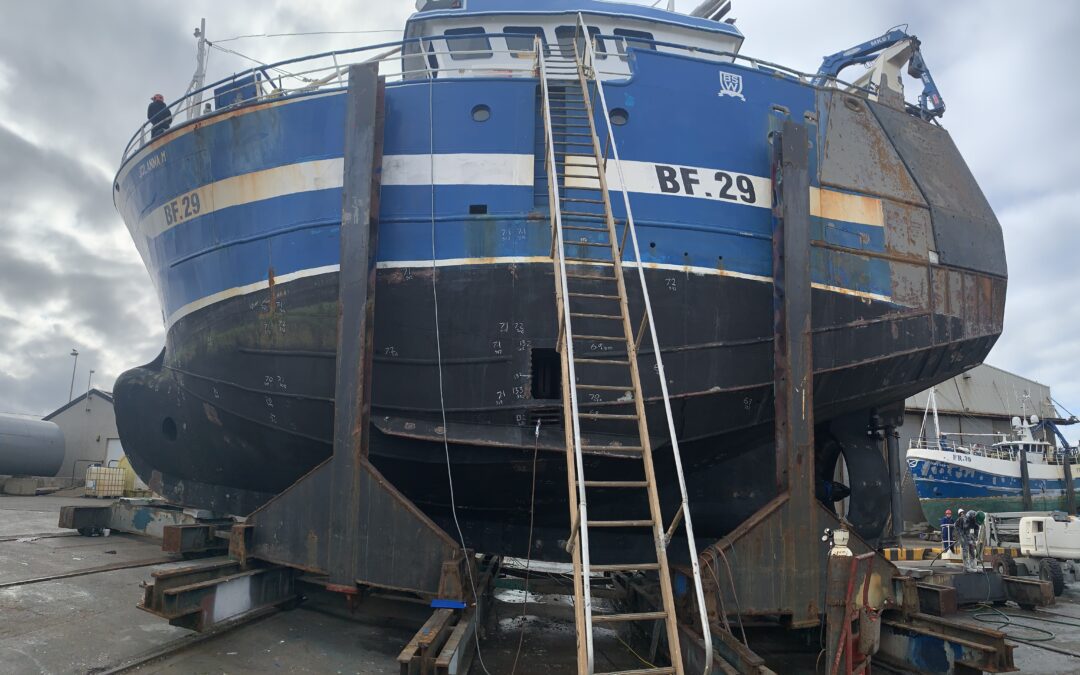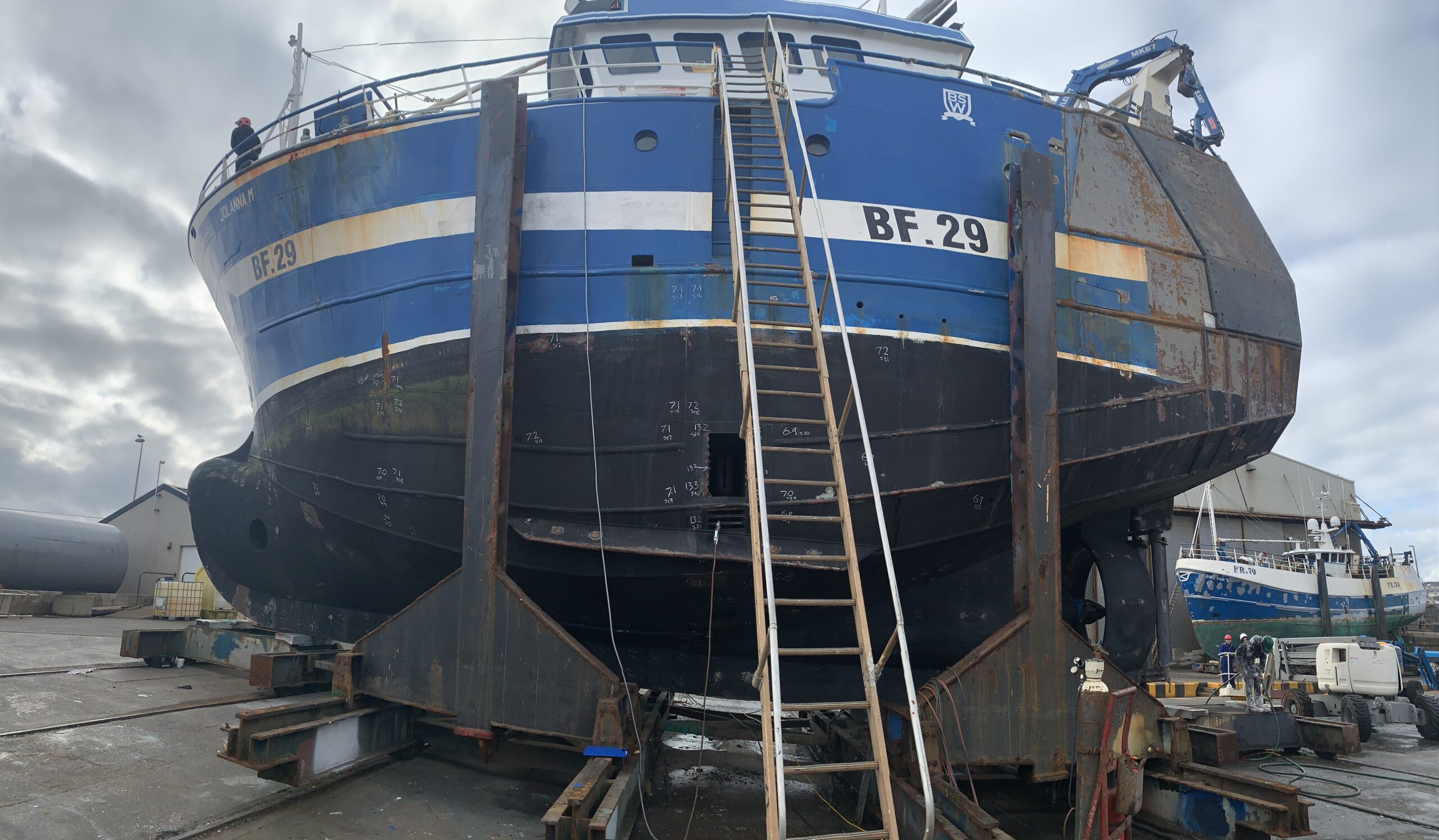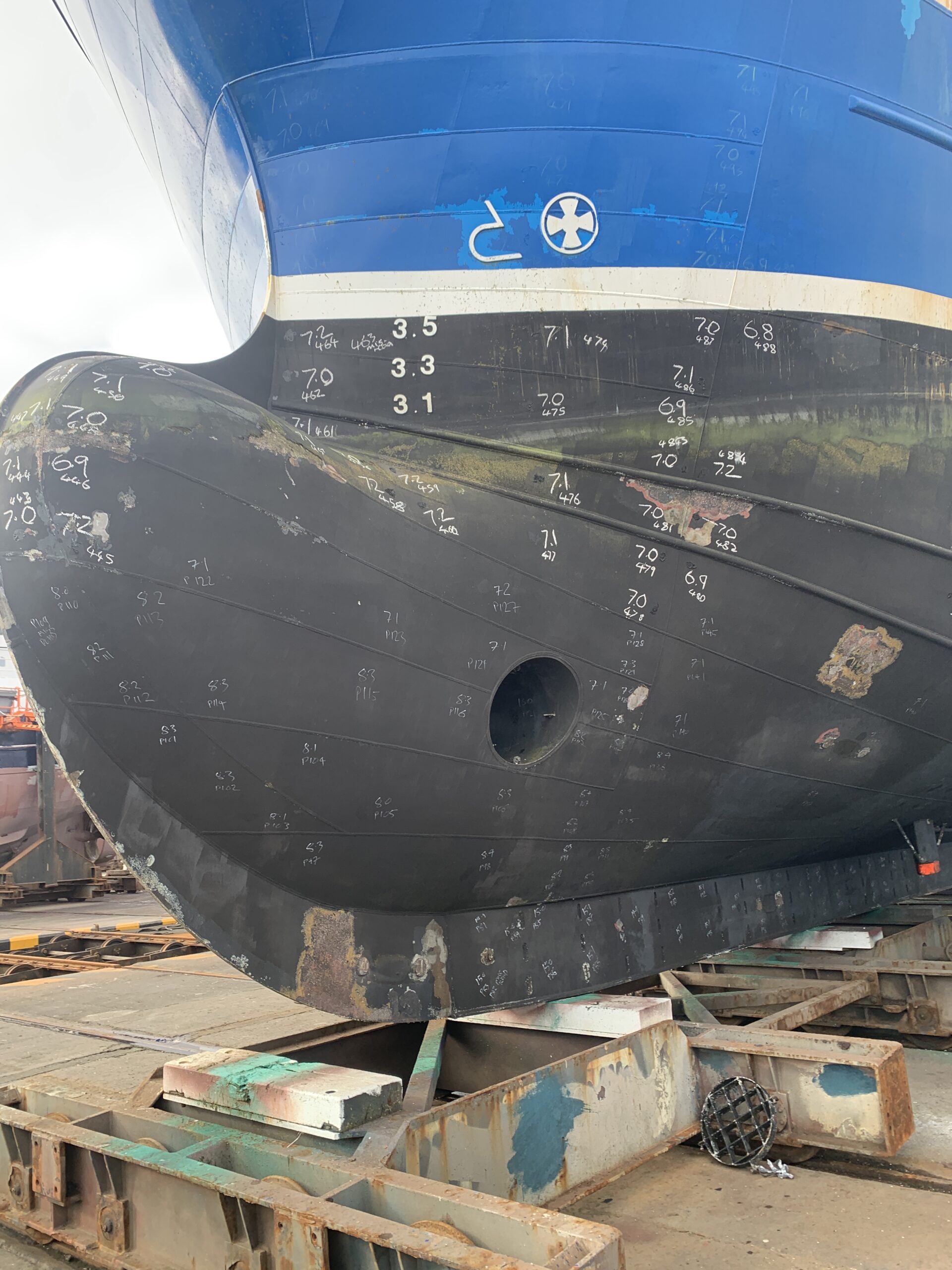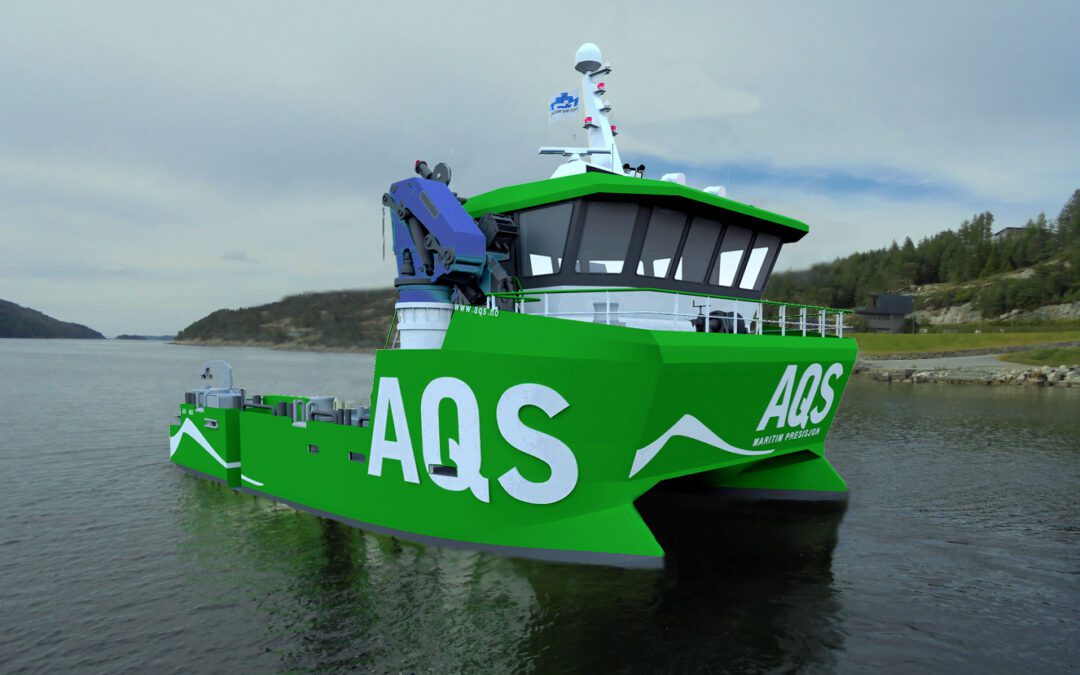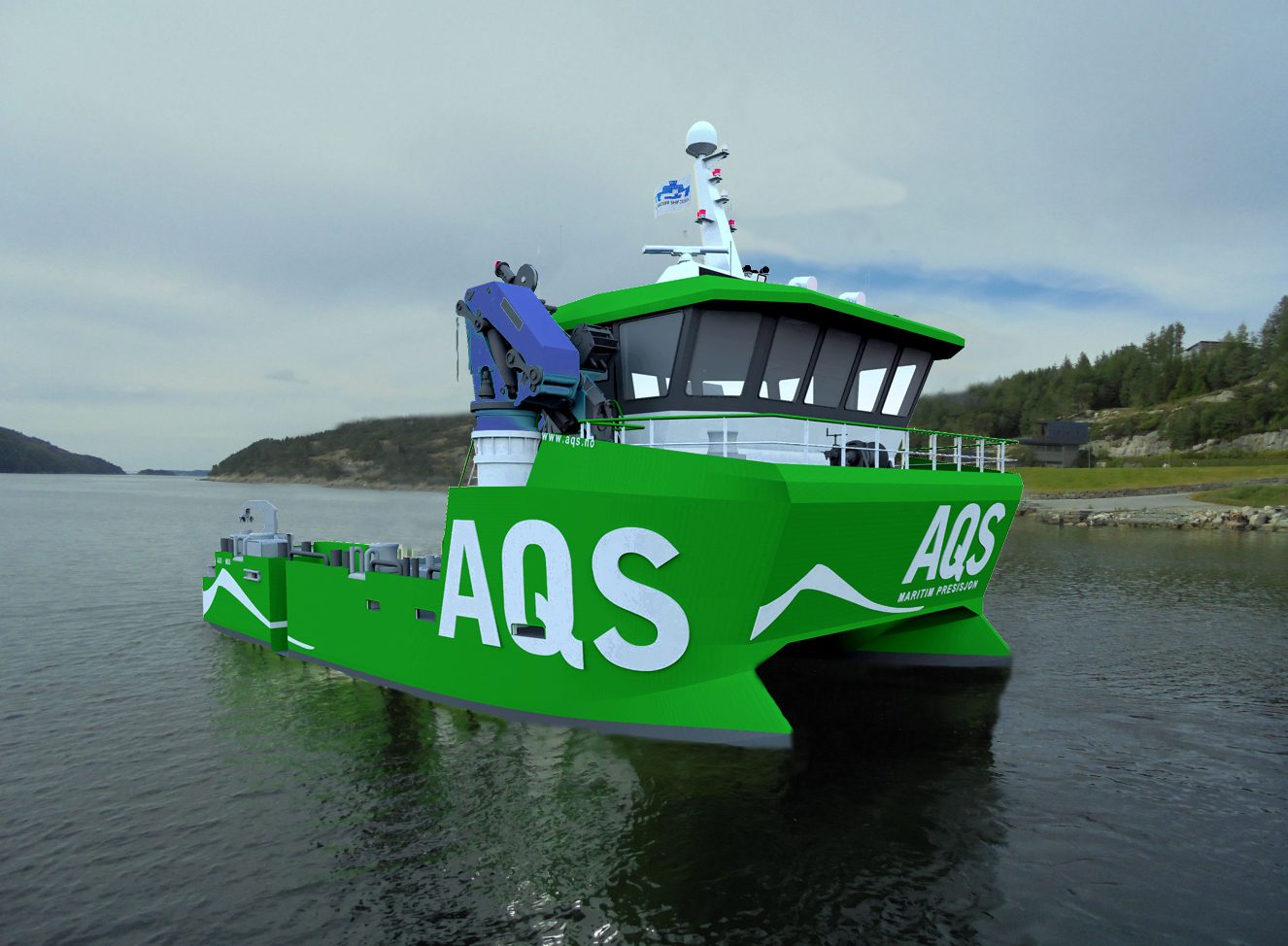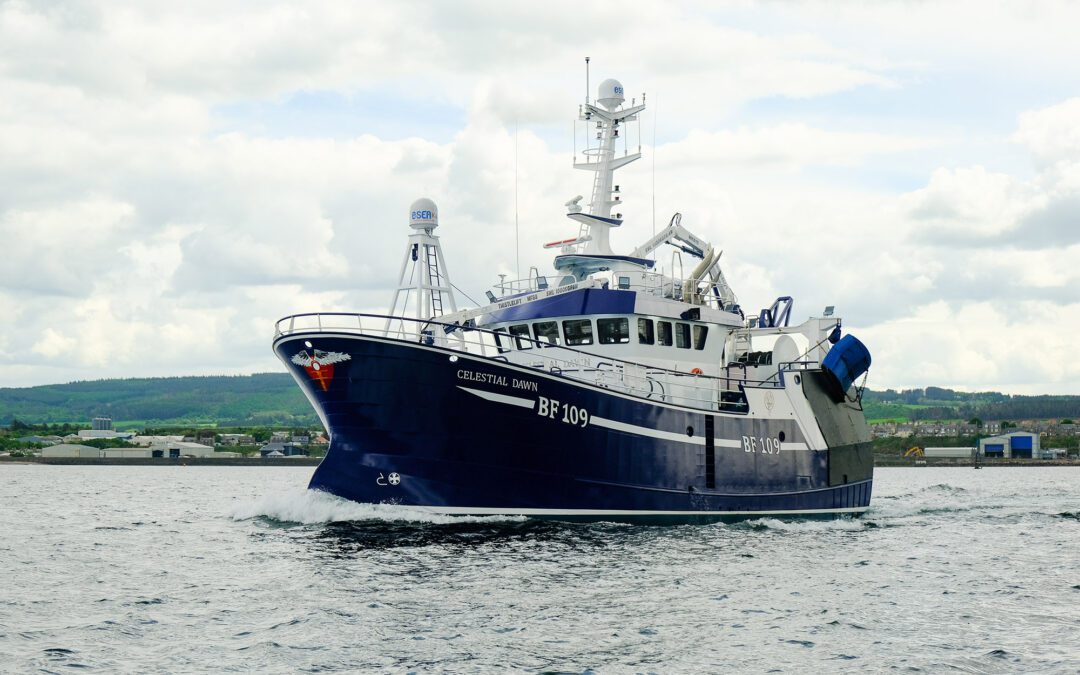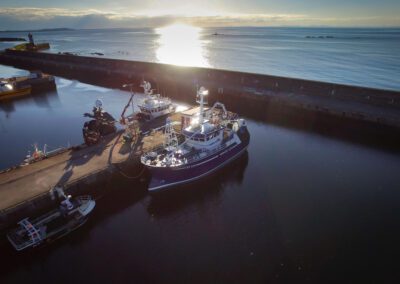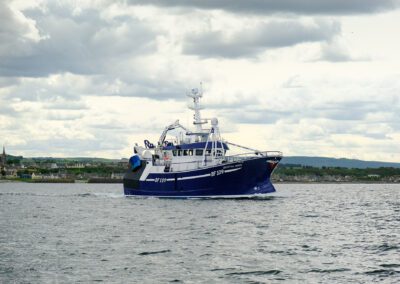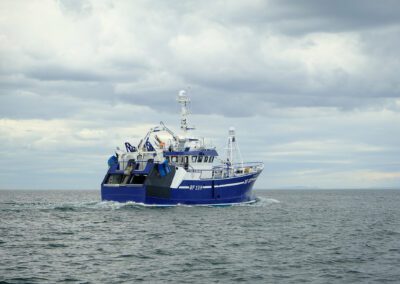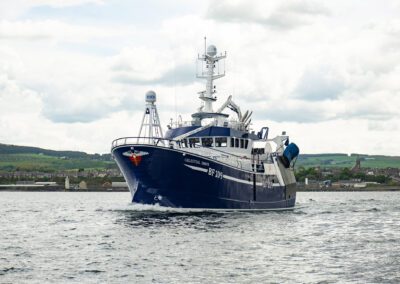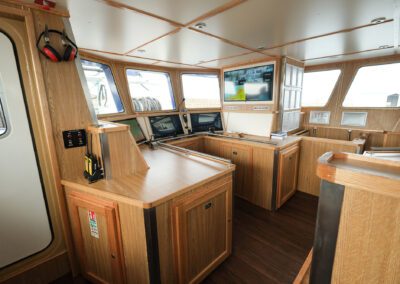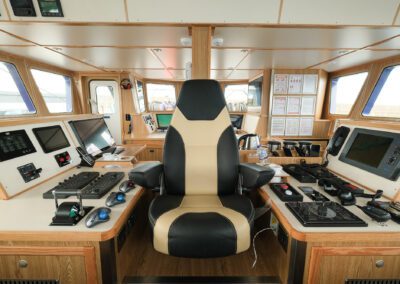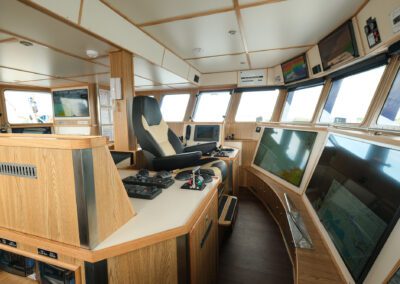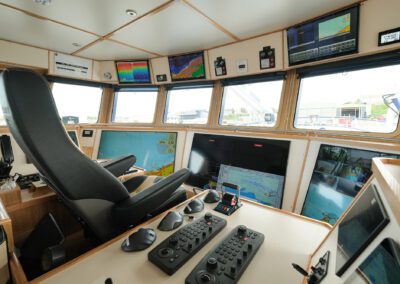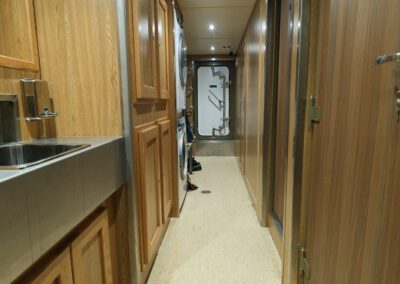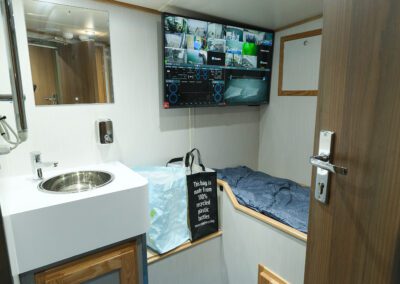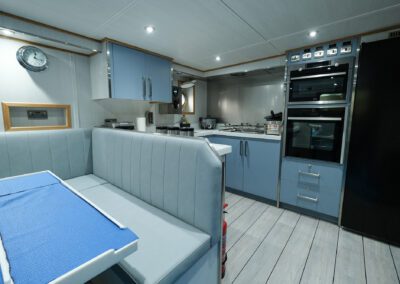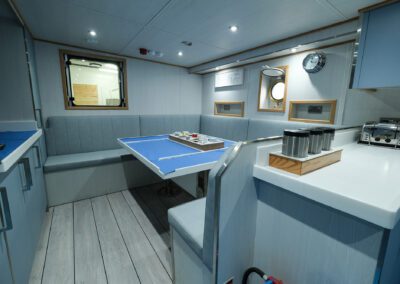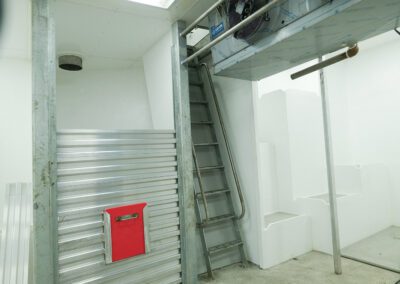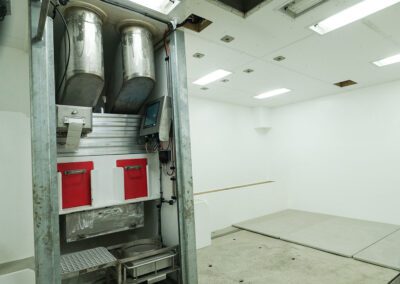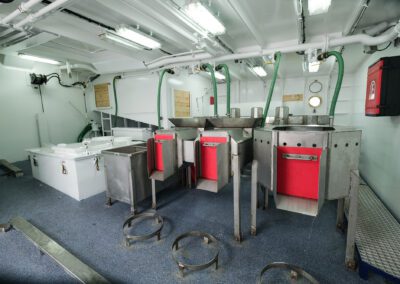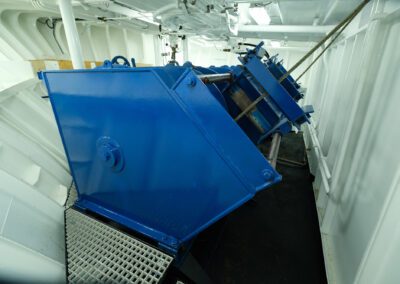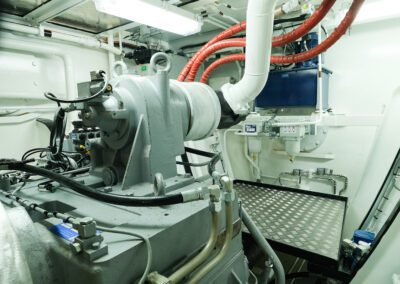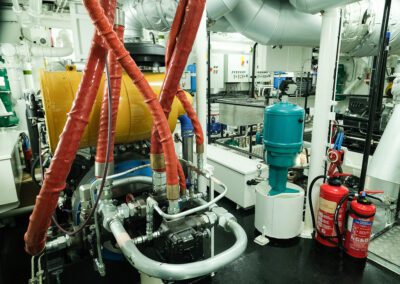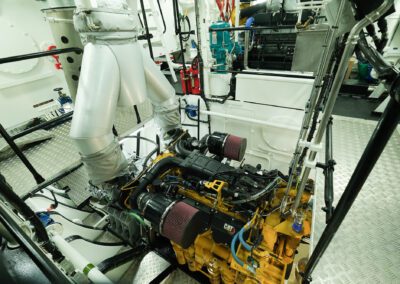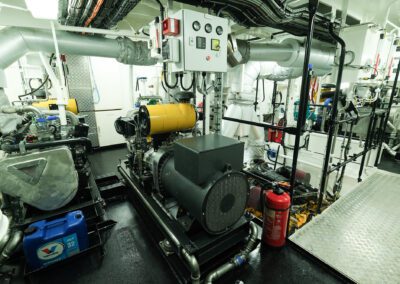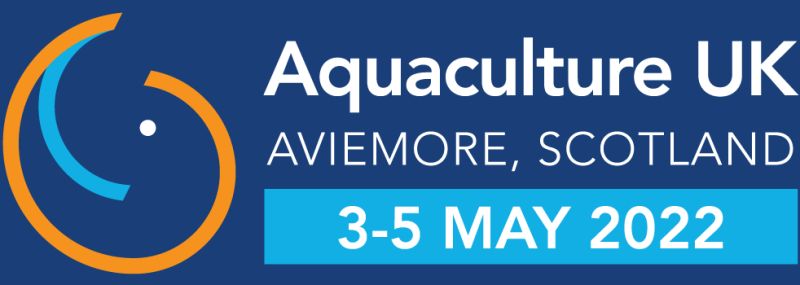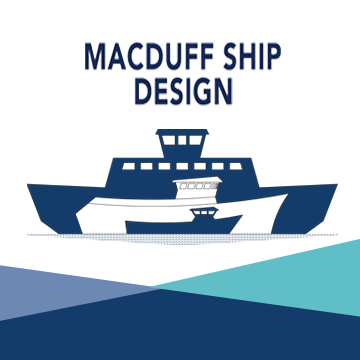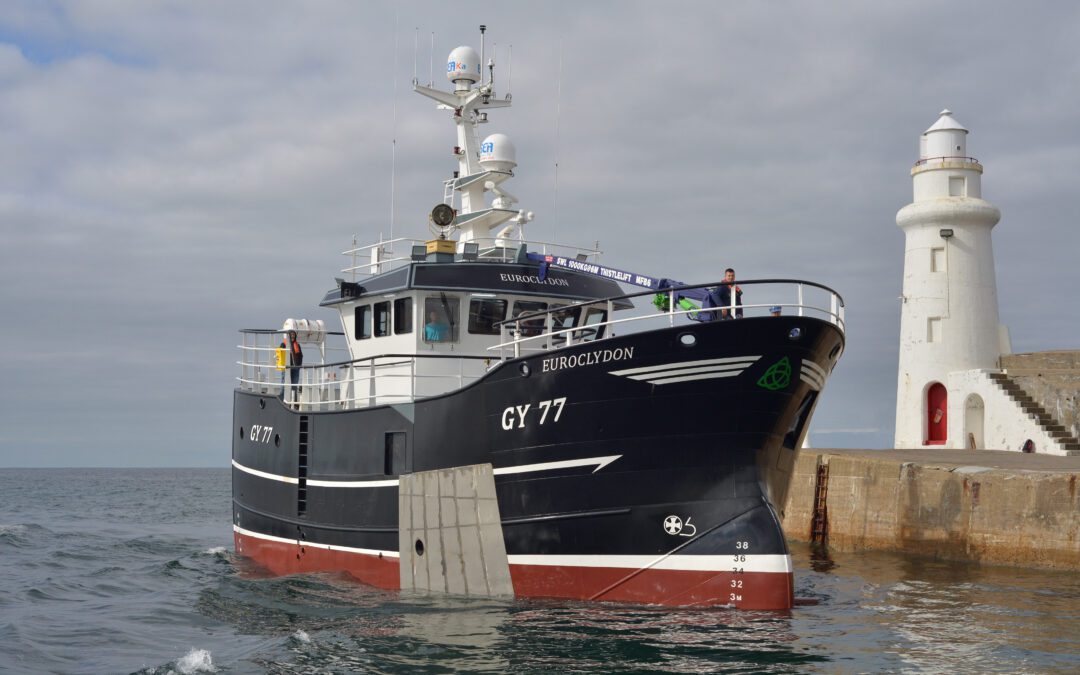
Euroclydon GY77 – Press Release
Crab Fishing Vessel ‘EUROCLYDON’ delivery
Macduff Ship Design is delighted to announce the recent completion and delivery to its owners of the MFV EUROCLYDON, GY77.
EUROCLYDON is the second crab fishing vessel built for Stuart MacDougall of fishing company Euroclydon Ltd in the space of only three years. Both vessels were designed by Macduff Ship Design and built by Macduff Shipyards Ltd.
The vessel is built to a full new design of vivier crabber fishing vessel. It features many similarities to the first vessel, MFV LEVANTER, with a similar arrangement throughout. However, with increased length, breadth, and depth, the EUROCLYDON provides noticeably more space all around to enhance crew comfort, sea keeping and fishing activity.
The design work began in the summer of 2020 with consultation between the yard and owner to finalise the general arrangement to their exact needs. With the initial design complete, the construction plans were drawn up by Macduff Ship Design and submitted to the MCA for plan approval under their newly adopted construction standard, inherited from Seafish.
The hull of EUROCLYDON up to the main deck along with the aft accommodation casing and the forward section of the shelter is built from Lloyds grade A shipbuilding plate. The mid part of the shelter where fishing activities take place, along with the wheelhouse and mast is built from marine grade aluminium to help reduce the vessels’ displacement. The hull form features a double chine hull form, transom stern and a modern bow designed to cut cleanly through the sea with less energy leading to a reduction in fuel consumption and emissions along with increased crew comfort.
The layout of the EUROCLYDON below the main deck features two three-man cabins aft, followed by a large engine room which extends forward over the top of the vivier tank. The vivier tank is positioned amidships with its trunk up to the main deck fitted through the engine room. Forward of the engine room, a bait store is situated and finally a water tank is fitted forward of the collision bulkhead in the bow.
Above the deck features the accommodation area aft with galley/mess to starboard, WC aft and a two berth skippers’ cabin and dry locker/laundry to port. Forward of this is the large fully sheltered working deck where the pots are brought onboard, catch emptied into the vivier tank, and pots stacked up until ready to shoot again. The shelter is protected by a large hydraulically powered hatch. The hauler is mounted forward and leads to a block which is fitted at the end of a telescopic boom which extends outboard of the hull to keep the pots clear of the side when hauling up. Forward at the main deck a weather-tight bulkhead is fitted, and a store space is arranged with shelving for storage and the anchor chain locker.
Above the shelter deck, a large open deck space provides for generous stowage of pots when moving gear to the grounds.
EUROCLYDON features some safety features built into the hull such as recessed foot/hand holds beneath the port and starboard fixed side ladders extending below the waterline and permanent guard rails around the wheelhouse perimeter. In addition, the owner’s preference for a raised shooting table is arranged in place of a low deck-level side opening to keep the crew safe within the shelter.
EUROCLYDON is fitted with a large vivier tank with a capacity of over 40,000 litres of seawater. The tank is subdivided with fibreglass grating partitions so the catch can be separated into different species/grades. The tank is serviced by two large electrically powered circulation pumps supplied by Bombas Azcue with the intention of one pump being used in service and one on standby. Overflow pipes are arranged port and starboard, above the waterline, so the crew and skipper can visibly see when the pumps are in operation.
The propulsion setup of EUROCLYDON is based around an innovative, large 2000 mm diameter four-bladed propeller designed and supplied by Wartsila. During the creation of the specification, the yard put forth to the owners a Mitsubishi S6B3 with 320 kW output as the proposed main engine due to its success and fuel economy on other projects in the past. Wartsila was then asked to investigate the optimal propeller diameter and design for the vessel given the engine particulars and a range of gear reductions available. Upon their conclusion, the 2m propeller was selected along with a Masson Marine W6000 gearbox with a large ratio of 8.705:1 which was calculated to provide optimal free steaming thrust per kW of power available. It was witnessed during trials that the vessel achieved a good speed for her length and the propulsion package performed smoothly with little vibration.
A hydraulic system was designed by Macduff Shipyards and features a 1.5 t hauler provided by Britannia Engineering, a telescopic boom for the hauling block and a large hauling hatch supplied by the yard, a KT120 bow thruster with 800 kg of thrust supplied by Kort Propulsion, and a MFB6 landing crane provided by Thistle Marine. Hydraulic power is provided by two large 37.5 kW motors which can be powered separately, or simultaneously, by either of the vessel’s generator sets providing complete redundancy.
GENERAL PARTICULARS
Length overall: 17.40 m
Length Registered: 16.45 m
Beam: 6.80 m
Depth: 3.80 m
Depart port displacement: 210 t
Fresh water capacity: 6,000 li
Oil fuel capacity: 11,000 li
Viver tank capacity: 40,000 li
Speed: 9.5 knots
Crew: 6-8
LIST OF MAJOR SUPPLIERS
Builder Macduff Shipyards Ltd
Designer Macduff Ship Design
Mitsubishi S6B3 main engine supplied by Macduff Diesels Limited, UK
Propeller supplied by Wartsila, Spain
Gearbox supplied by Masson Marine, France
Generator sets supplied by Macduff Diesels Ltd, UK
Box cooling systems for each engine and the hydraulic circuit supplied by Blokland Non Ferro, Netherlands
Pumps supplied by Azcue Pumps SA, Spain
Deck machinery equipment supplied by the yard
Hydraulic hauler supplied by Britannia Engineering
Deck crane supplied by Thistle Marine, UK
Bow thruster supplied by the Kort Propulsion, UK
Fire doors supplied by B-15 Marine Ltd, UK
Weathertight doors supplied by Winel, Netherlands
Rudder system supplied by the yard
Steering gear supplied by Scan Steering APS, Denmark
Wheelhouse windows and portlights supplied by HK Van Wingerden & An BV, Netherlands
Fish handling system supplied by the yard
Paint system by International Paints, UK
Wheelhouse chairs supplied by Norsap, UK
Oil fuel filter/separator and main engine oil fine filter supplied by CC Jensen, UK
Pressure washers supplied by Grampian Power Clean, UK
Anchors and chain supplied by Fendercare Marine, UK
Switchboard and electrical system supplied and installed by R D Downie Limited, UK

